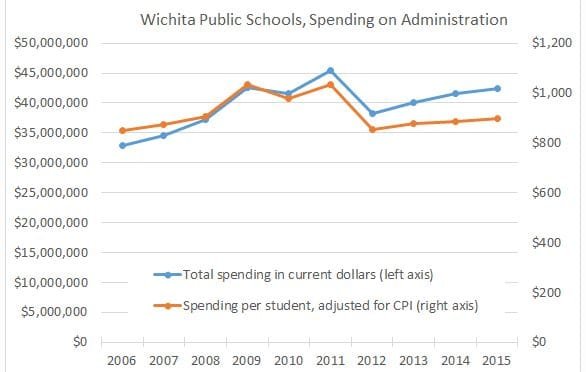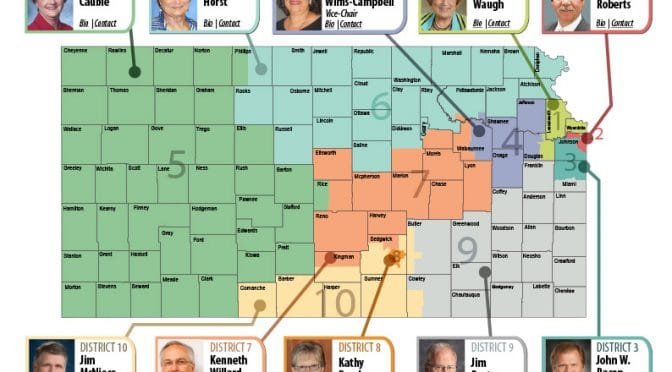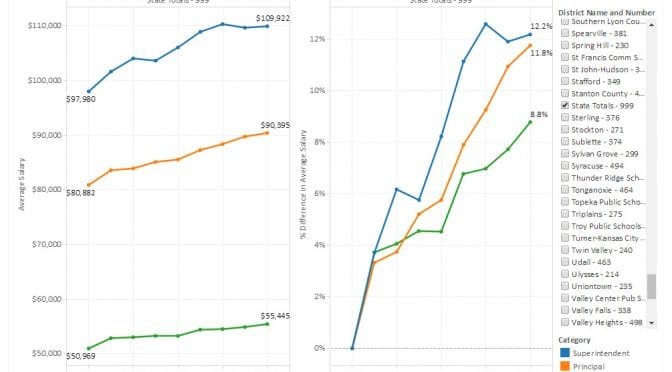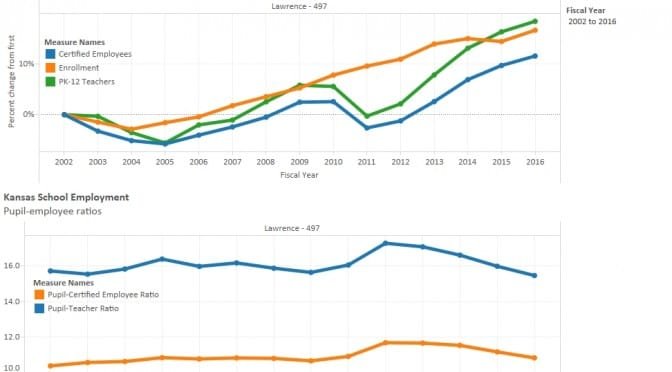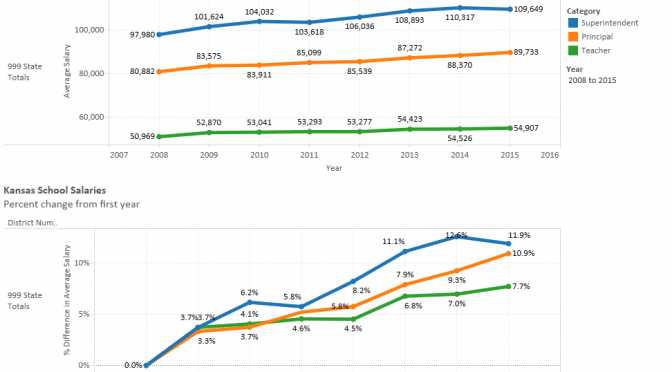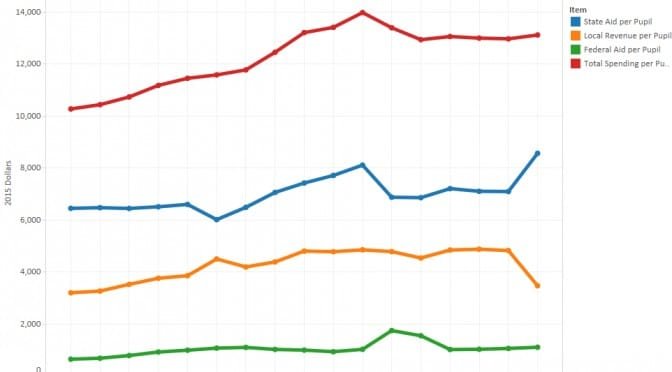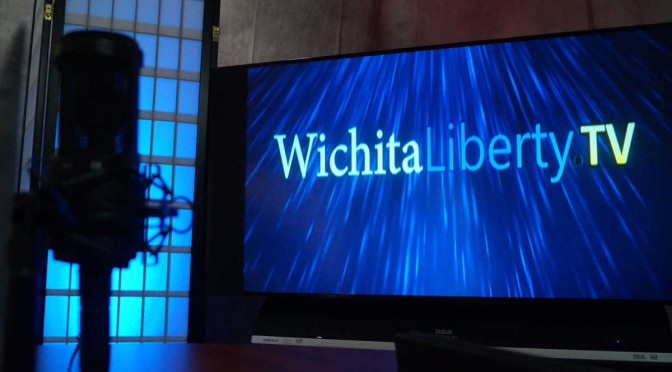The average Kansan is misinformed regarding Kansas school spending, and Kansas news media are to blame, writes Paul Waggoner of Hutchinson.
Math Quiz on Kansas Spending
By Paul Waggoner
Math questions, one would think, are very straight-forward and easy to answer. At least easy to guess the right answer in a simple multiple choice test. Such is not the case however with the average Kansan who follows state issues relying on the headlines in the Kansas press.
The reality of how poor a job the Kansas press is doing with numbers is found in a December 2015 SurveyUSA study of 500 plus registered voters in Kansas. This scientific study of voters’ knowledge of educational spending in Kansas was virtually ignored by the Kansas media. Most likely because its implications don’t fit the media narrative on education in this Year 5 of the Age of Brownback. Even worse, the poll was commissioned by a conservative think tank, the Kansas Policy Institute.
As to voter (mis) understanding this 15 question poll hit the jackpot. All the questions were multiple choice with only 4 options given.
Question #6 asked how much state funding do you think Kansas school districts receive per pupil? The correct answer is well over $7,000 per student. 39% of Kansas voters thought it was under $4,000, another 22% thought between $4,000 and $5,000. Only 7% of voters guessed properly.
The follow-up, Question #7, was how much total (federal/state/local) funding do you think Kansas school districts receive per pupil? The correct answer in 2015 was over $13,000 per pupil. Only 5% of registered Kansas voters got that one right. 40% thought the total was under $7,000, and 21% said $7,000 to $10,000 which were the two most inaccurate options!
At this point I was even wondering how the accepted wisdom is so far removed from the truth. So I went to ksde.org, the website of the Kansas State Department of Education, to verify the precise figures. At that website every school district in the state is listed.
What our local school districts spend is very close to the state averages. The Hutchinson USD 308 budget was over $60,000,000 in 2014 with 4,836 full-time students or $12,449 spent per pupil. 5 years earlier the USD 308 budget was $57 million, 5 years before that it was about $41 million.
The comparable figures for USD 313 Buhler are $12,360 per pupil in 2014 with a $26,300,000 budget that 5 years earlier was $22,200,00 and 5 years before that was $18,000,000. For USD 313 that meant students were educated for just $9,000 per pupil as recently as 2005.
Kansas school districts total spending is $2.0 billion higher now than just 10 years ago ($6 billion versus $4 billion). That is an incontrovertible fact. Which leads to two immediate questions: How can the Supreme court keep claiming the spending is constitutionally inadequate? And what exactly do taxpayers have to show for the extra $2,000,000,000 every year?
The reality of those numbers are nowhere in the publics’ consciousness currently. For instance, SurveyUSA question #8 was “over the last 5 years how much do you think total per pupil funding has changed?” The correct answer is that it is actually up 9.92%. But fully 47% of Kansas voters confidently said it had dropped over 5%! Another 15% were sure it had dropped but thought the percentage was smaller. Only 7% of voters knew that school spending was up “over 5%’.
The budget trajectory has changed and is on a much flatter curve than ever before. Taxpayers are mostly rejoicing, tax spenders (and their allies) are howling mad.
My revised school spending narrative is frankly the story of the entire Kansas budget (as can be easily accessed at budget.ks.gov “Governors Budget Report FY 2017”).
The state general fund budget first hit $1 billion in 1980 and grew consistently under Governors Carlin/Hayden/Finney at about a 6.5% annual rate.
Under Graves and Sebelius that accelerated growth rate continued until the 2008-09 recession when the state budget dropped dramatically for 1 year under Governor Parkinson. This made a cumulative annual growth average of around 3% for those three administrations.
Under Governor Brownback the general fund budget is still going up, but at a 5 year annual growth rate of 1.8%.
On February 20th one Hutchinson News columnist’s headline blasted the “Deliberate financial starving of the state of Kansas.” I see this as more of a diet, and I say it is about time.
The numbers on the state budget spending (and taxation) are readily available online. The execution of the plan for this new governmental trajectory leave something to be desired, but that is the topic for another day.
Paul Waggoner is a Hutchinson resident and business owner. He can be reached with comments or questions at waggonerpm@gmail.com.

